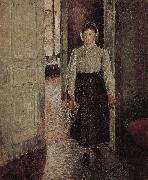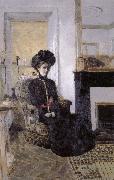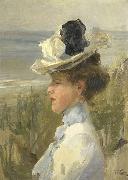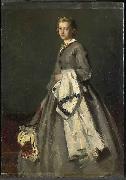Wholesale Oil Painting No Minimum |
|||||||||||
|
|
|||||||||||

|
|||||||||||
|
|
|
||||||||
Jean-Franc MilletFrench Realist Painter, 1814-1875 |
||||||||
|
|
||||||||
Young woman
Young woman Painting ID:: 10563 |
1844Oil on canvas
Art Institute of
Chicago, Illinois 1844Oil on canvas Art Institute of Chicago, Illinois |
|||||||
|
|
||||||||
VELAZQUEZ, Diego Rodriguez de Silva ySpanish Baroque Era Painter, 1599-1660 Spanish painter. He was one of the most important European artists of the 17th century, spending his career from 1623 in the service of Philip IV of Spain. His early canvases comprised bodegones and religious paintings, but as a court artist he was largely occupied in executing portraits, while also producing some historical, mythological and further religious works. His painting was deeply affected by the work of Rubens and by Venetian artists, especially Titian, as well as by the experience of two trips (1629-31 and 1649-51) to Italy. Under these joint influences he developed a uniquely personal style characterized by very loose, expressive brushwork. |
||||||||
|
|
||||||||
|
|
Young woman
Young woman Painting ID:: 54731 |
mk237
1635
Oil on canvas
98x49cm
mk237 1635 Oil on canvas 98x49cm |
||||||
|
|
||||||||
Henri MatisseFrench Fauvist Painter and Sculptor, 1869-1954 Henri Matisse is considered the most important French artist of the 20th century and, along with Pablo Picasso, one of the most influential modernist painters of the last century. Matisse began studying drawing and painting in the 1890s. A student of the masters of Post-Impressionism, Matisse later made a reputation for himself as the leader of a group of painters known as Les Fauves. An ironic label given to them by a critic, the name reflected Matisse's aggressive strokes and bold use of primary colors. In 1905 Matisse gained sudden fame with three paintings, including Woman with the Hat, purchased by the wealthy American ex-patriot Gertrude Stein. Beyond painting, he worked with lithographs and sculpture, and during World War II he did a series of book designs. Later in his career he experimented with paper cutouts and designed decorations for the Dominican chapel in Vence, France. Along with Picasso, |
||||||||
|
|
||||||||
|
|
Young woman
Young woman Painting ID:: 58121 |
mk260 1938 years charcoal paper 65 x 50 cm mk260 1938 years charcoal paper 65 x 50 cm |
||||||
|
|
||||||||
Camille PissarroCaribbean-born French Pointillist/Impressionist Painter, ca.1830-1903 .Painter and printmaker. He was the only painter to exhibit in all eight of the Impressionist exhibitions held between 1874 and 1886, and he is often regarded as the 'father' of the movement. He was by no means narrow in outlook, however, and throughout his life remained as radical in artistic matters as he was in politics. Thad?e Natanson wrote in 1948: 'Nothing of novelty or of excellence appeared that Pissarro had not been among the first, if not the very first, to discern and to defend.' The significance of Pissarro's work is in the balance maintained between tradition and the avant-garde. Octave Mirbeau commented: 'M. Camille Pissarro has shown himself to be a revolutionary by renewing the art of painting in a purely working sense; |
||||||||
|
|
||||||||
|
|
young woman
young woman Painting ID:: 60737 |
mk259 1896 Oil on canvas 61 x 50 cm mk259 1896 Oil on canvas 61 x 50 cm |
||||||
|
|
||||||||
Edouard Vuillard1868-1940 French Edouard Vuillard Galleries Jean-Edouard Vuillard, the son of a retired captain, spent his youth at Cuiseaux (Saone-et-Loire); in 1878 his family moved to Paris in modest circumstances. After his father\'s death, in 1884, Vuillard received a scholarship to continue his education. In the Lycee Condorcet Vuillard met Ker Xavier Roussel (also a future painter and Vuillard\'s future brother in law), Maurice Denis, musician Pierre Hermant, writer Pierre Veber and Lugne-Poe. On Roussel\'s advice he refused a military career and entered the Ecole des Beaux-Arts, where he met Pierre Bonnard. In 1885, Vuillard left the Lycee Condorcet and joined his closest friend Roussel at the studio of painter Diogene Maillart. There, Roussel and Vuillard received the rudiments of artistic training. |
||||||||
|
|
||||||||
|
|
Young woman
Young woman Painting ID:: 65972 |
mk288 1900-1901 Oil Painting 77.5 x 51cm cardboard private possession mk288 1900-1901 Oil Painting 77.5 x 51cm cardboard private possession |
||||||
|
|
||||||||
August Allebepainted Young woman in 1863 |
||||||||
|
|
||||||||
|
|
Young woman
Young woman Painting ID:: 81126 |
Young woman. oil on panel. 35.5 cm x 23.5 cm
Date 1863
cjr Young woman. oil on panel. 35.5 cm x 23.5 cm Date 1863 cjr |
||||||
|
|
||||||||
August Allebepainted Young woman in 1863 |
||||||||
|
|
||||||||
|
|
Young woman
Young woman Painting ID:: 85175 |
35.5 cm x 23.5 cm
Date 1863(1863)
cyf 35.5 cm x 23.5 cm Date 1863(1863) cyf |
||||||
|
|
||||||||
Abbot H Thayer1849-1921 Abbot H Thayer Galleries Abbott Handerson Thayer (August 12, 1849 ?C May 29, 1921) was an American artist, naturalist and teacher. As a painter of portraits, figures, animals and landscapes, he enjoyed a certain prominence during his lifetime, as shown by the fact that his paintings are in the most important U.S. art collections. In the last third of his life, he worked together with his son, Gerald Handerson Thayer, on a major book about protective coloration in nature, titled Concealing Coloration in the Animal Kingdom: An Exposition of the Laws of Disguise Through Color and Pattern; Being a Summary of Abbott H. Thayer??s Disclosures. First published by Macmillan in 1909, then reissued in 1918, it had a widespread impact on the use of military camouflage during World War I. He also influenced American art through his efforts as a teacher, taking on apprentices in his New Hampshire studio. |
||||||||
|
|
||||||||
|
|
Young Woman
Young Woman Painting ID:: 87278 |
oil on canvas
25 1/2 x 19 5/8 inches
cyf oil on canvas 25 1/2 x 19 5/8 inches cyf |
||||||
|
|
||||||||
Isaac IsraelsDutch, 1865-1934 Son of Jozef Israëls. He was largely self-taught, showing precocious talent and attending the Academie in The Hague in 1878-80. His first paintings date from 1880-84 and include a self-portrait, portraits of women and military subjects such as Bugle Practice. They were composed in the studio in a precise style, soft grey and brown tones predominating, showing the influence of the Hague school. In 1887 Israels moved to Amsterdam, where he was at the centre of the Tachtigers of writers and painters. Among his friends were George Hendrik Breitner, Lodewijk van Dyssel, Frans Erens, Max Liebermann, Jan Pieter Veth and Jan Voerman. In Amsterdam, after a brief and abortive period at the Rijksacademie, he sought a more fluent technique with which to record contemporary life. His drawings and watercolours are predominantly of cafes, cabarets, dance halls and the street life of Amsterdam. In 1889 he visited Paris, where he met St phane Mallarm, Berthe Morisot, Odilon Redon and Emile Zola. In 1894 he painted Three Servant Girls, the first of his plein-air pictures. From then on he applied transparent colours to capture the fleeting effects of light in oil, watercolour and pastel. His oils were painted in flat broad strokes. For the rest of his life he employed his very personal Impressionist style, which emphasized the interplay of light, colour, line and movement. His favourite subjects were beach, street and park scenes |
||||||||
|
|
||||||||
|
|
Young woman
Young woman Painting ID:: 92387 |
1895 - 1900
Medium oil on cardboard
Dimensions 61.2 X 45 cm (24.1 X 17.7 in)
cjr 1895 - 1900 Medium oil on cardboard Dimensions 61.2 X 45 cm (24.1 X 17.7 in) cjr |
||||||
|
|
||||||||
August Allebepainted Young woman in 1863 |
||||||||
|
|
||||||||
|
|
Young woman
Young woman Painting ID:: 96379 |
oil on panel. 35.5 cm x 23.5 cm
Date 1863(1863)
cyf oil on panel. 35.5 cm x 23.5 cm Date 1863(1863) cyf |
||||||
|
|
||||||||
|
August Allebe painted Young woman in 1863 Young woman oil on panel. 35.5 cm x 23.5 cm Date 1863(1863) cyf |
||||||||
|
|
||||||||
|
Prev Next
|
||||||||
|
|
||||||||
|
Related Paintings to August Allebe :. |
||||||||
|
|
||||||||
|
CONTACT US |










